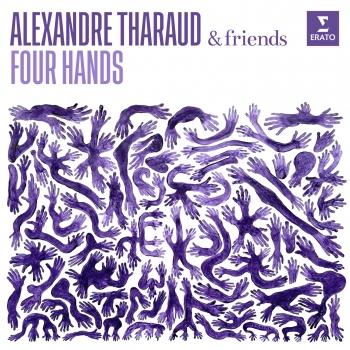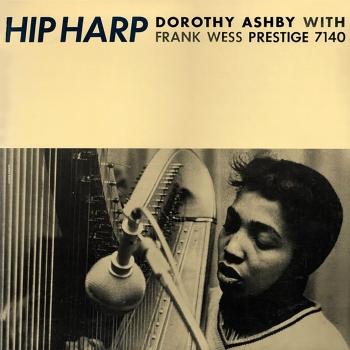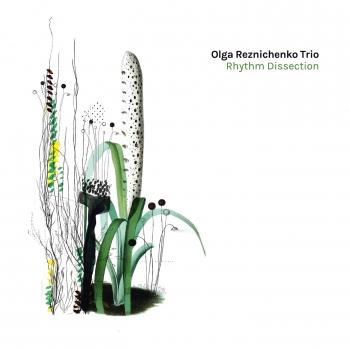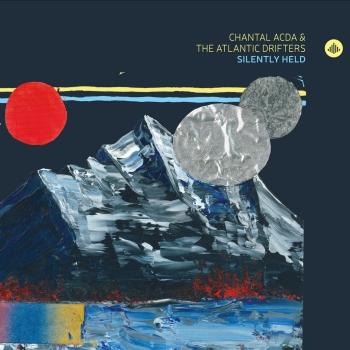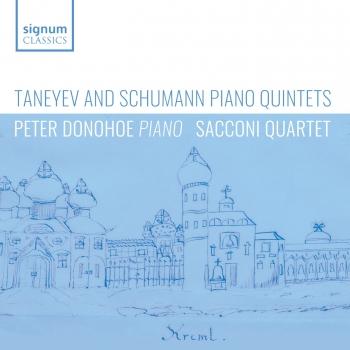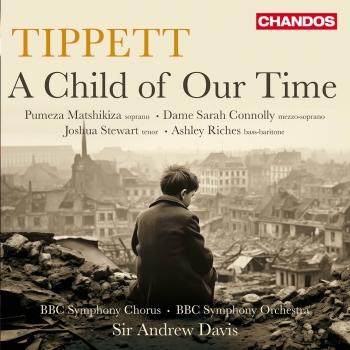
Scriabin: Piano Sonata No. 3 in F-Sharp Minor, Op. 23 / Prokofiev: Piano Sonata No. 7 in B-Flat Major, Op. 83 (Remastered) Glenn Gould
Album info
Album-Release:
2015
HRA-Release:
09.09.2015
Label: Sony Classical
Genre: Classical
Subgenre: Instrumental
Artist: Glenn Gould
Composer: Alexander Scriabin (1872–1915), Serge Prokofiev (1891-1953)
Album including Album cover Booklet (PDF)
I`m sorry!
Dear HIGHRESAUDIO Visitor,
due to territorial constraints and also different releases dates in each country you currently can`t purchase this album. We are updating our release dates twice a week. So, please feel free to check from time-to-time, if the album is available for your country.
We suggest, that you bookmark the album and use our Short List function.
Thank you for your understanding and patience.
Yours sincerely, HIGHRESAUDIO
- Alexander Scriabin (1872–1915): Piano Sonata No. 3 in F-Sharp Minor, Op. 23
- 1I. Drammatico08:04
- 2II. Allegretto02:47
- 3III. Andante05:13
- 4IV. Presto con fuoco - Maestoso07:10
- Piano Sonata No. 7 in B-Flat Major, Op. 83
- 5I. Allegro inquieto - Andantino08:24
- 6II. Andante caloroso07:39
- 7III. Precipitato03:23
Info for Scriabin: Piano Sonata No. 3 in F-Sharp Minor, Op. 23 / Prokofiev: Piano Sonata No. 7 in B-Flat Major, Op. 83 (Remastered)
„In a career full of odd recording projects -- a disc of Sibelius? a disc of Hindemith? a disc of Grieg? -- Glenn Gould's decision to record and couple sonatas by Scriabin and Prokofiev was not all that unusual. Indeed, the mechanized modernist masterpiece that is Prokofiev's Seventh Piano Sonata might even have been inevitable -- how could the Canadian virtuoso have resisted the chance to tackle the work's staggeringly difficult concluding Precipatato? But what would the master of Bach on the modern piano do with Scriabin's sensual fin de siècle sonata?
The answer is, pretty much the same thing he does with Prokofiev's sonata, or, for that matter, with Hindemith's and Grieg's sonatas: he transforms them from whatever it is they were into pure products of his own eccentric imagination. In his 1967 Prokofiev Seventh, Gould plays with his standard hard-edged tone, steel-fingered staccato, and strong-willed rhythms. But while this fits well with the work's aesthetic, Gould's predilection for unscheduled tempo changes and unlikely tempo relationships distorts the work's structure to the point where its purpose seems lost.
Still, Gould's Prokofiev is far more successful than Gould's Scriabin. Making use of neither legato nor rubato, much less the sustaining pedal, Gould's 1968 recording of Scriabin's Second sounds wholly dissimilar from any other recording of the work. Because without legato and rubato, the work entirely lacks expressivity, emotionality, and sensuality, and thus lacks the very qualities that define the composer. As with the Prokofiev, there's no doubt Gould can play the notes; his virtuosity is, as always, breathtaking. But as with his Prokofiev, there's reasonable doubt that Gould has any sympathy for the music.
Recorded by Andrew Kazdin in Columbia's New York Studios, the stereo sound here is very clear and very direct. Also, it should be added that owing mostly to the music's fuller textures and louder dynamics, the incessant vocalizing that mars so many of Gould's recordings is somewhat less obtrusive here.“ (James Leonard, AMG)
Glenn Gould, piano
Recorded July 1967, January, February and June 1968 at Columbia 30th Street Studio, Manhattan, New York
Engineered by Fred Plaut
Digitally remastered

 Glenn Gould
Glenn Gould
was born in Toronto in 1932, and enjoyed a privileged, sheltered upbringing in the quiet Beach neighborhood. His musical gifts became apparent in infancy, and though his parents never pushed him to become a star prodigy, he became a professional concert pianist at age fifteen, and soon gained a national reputation. By his early twenties, he was also earning recognition through radio and television broadcasts, recordings, writings, lectures and compositions.
Early on, Gould’s musical proclivities, piano style and independence of mind marked him as a maverick. Favoring structurally intricate music, he disdained the early-Romantic and impressionistic works at the core of the standard piano repertoire, preferring Elizabethan, Baroque, Classical, late-Romantic and early-twentieth-century music; Bach and Schoenberg were central to his aesthetic and repertoire. He was an intellectual performer, with a special gift for clarifying counterpoint and structure, but his playing was also deeply expressive and rhythmically dynamic. He had the technique and tonal palette of a virtuoso, though he upset many pianistic conventions – avoiding the sustaining pedal, using détaché articulation, for example. Believing that the performer’s role was properly creative, he offered original, deeply personal, sometimes shocking interpretations (extreme tempos, odd dynamics, finicky phrasing), particularly in canonical works by Mozart, Beethoven and Brahms.
Gould’s American début, in 1955, and the release, a year later, of his first Columbia recording, of Bach’s Goldberg Variations, launched his international concert career. He earned widespread acclaim despite his musical idiosyncrasies, while his flamboyant stage mannerisms, as well as his hypochondria and other personal eccentricities, fuelled colorful publicity that heightened his celebrity. But he hated performing – ”At concerts I feel demeaned, like a vaudevillian” – and though in great demand, he rationed his appearances stingily (he gave fewer than forty concerts overseas). Finally, in 1964, he permanently retired from concert life.
Gould harbored musical, temperamental and moral objections to concerts, and aired them publicly: “The purpose of art,” he wrote, “is not the release of a momentary ejection of adrenalin but is, rather, the gradual, lifelong construction of a state of wonder and serenity.” Even before he retired, he was not satisfied with being a concert pianist; he made radio and television programs, published writings on many musical and non-musical topics, continued to compose. After 1964, this work away from the piano only intensified. He liked to call himself “a Canadian writer, composer, and broadcaster who happens to play the piano in his spare time.”
His retirement was also fuelled by his devotion to the electronic media. Gould was one of the first truly modern classical performers, for whom recording and broadcasting were not adjuncts to the concert hall but separate art forms that represented the future of music. He made scores of albums, steadily expanding his repertoire and developing a professional engineer’s command of recording techniques. He also wrote prolifically about recording and the mass media, his ideas often harmonizing with those of his friend Marshall McLuhan.
Though he never became the significant composer that he longed to be, Gould channeled his creativity into other media. In 1967, he created his first “contrapuntal radio documentary,” The Idea of North, an innovative tapestry of speaking voices, music and sound effects that drew on principles from documentary, drama, music and film. Over the next decade, he made six more such specimens of radio art, in addition to many other, more conventional, recitals and talk-and-play shows for radio and television. He also arranged music for two feature films.
Gould lived a quiet, solitary, spartan life, and guarded his privacy; his romantic relationships with women, for instance, were never made public. (“Isolation is the one sure way to human happiness.”) He maintained a modest apartment and a small studio, and left Toronto only when work demanded it, or for an occasional rural holiday. He recorded in New York until 1970, when he began to record primarily at Eaton Auditorium in Toronto.
In the summer of 1982, having largely exhausted the piano literature that interested him, he made his first recording as a conductor, and he had ambitious plans for several years’ worth of conducting projects; he planned then to give up performing, retire to the countryside, and devote himself to writing and composing. But shortly after his fiftieth birthday, Gould died suddenly of a stroke.
Since then, he has enjoyed a remarkable posthumous “life.” His multifarious work has been widely disseminated. He has been the subject of an enormous and diverse literature in many languages. And he has inspired conferences, exhibitions, festivals, societies, radio and television programs, novels, plays, musical compositions, poems, visual art and a feature film (Thirty-Two Short Films About Glenn Gould).
Moreover, his ideas – like McLuhan’s – still resonate strongly today in the world of digital technology, which was in its infancy when he died. His postmodernist advocacy of open borders between the roles of composer, performer and listener, for instance, anticipated digital technologies (like the Internet) that democratize and decentralize the institutions of culture. There is no question that Gould, more than any other classical musician, would have understood and admired digital technology – and would have had fun playing with it. (Kevin Bazzana)

